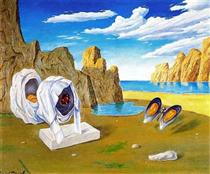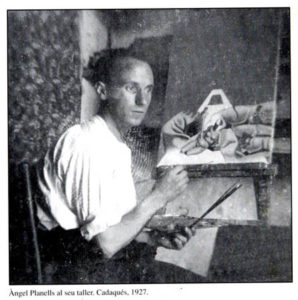
1901 - 1989
Angel Planells Cruanas
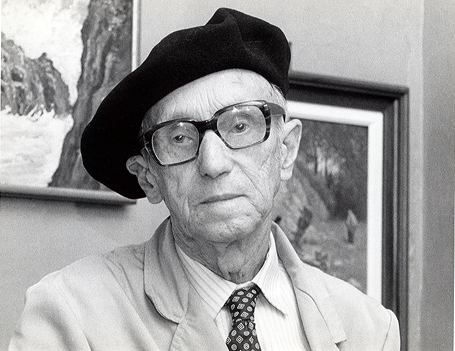
description
A Spanish (Catalan) artist, master of lithography and engraving, a representative of the large Emporda school of Surrealism.
When he was a teenager, he was a friend of Salvador Dali, who greatly influenced him. A little later, Angel Planells made friends with Rene Magritte and other Surrealist artists in Cadaqués.
The artist participated in exhibitions held in the cities of Spain and Paris. Three of his works were included in the First London Surrealist Exhibition. One of them was bought by an influential avant-garde collector and expert, the organizer of the vernissage, Roland Penrose; that was a real success and recognition of Planells’ originality.
The civil war in the artist’s homeland led to a significant break in his creative career that had begun successfully: at the times of Franco, the master could not work in the style of surrealism openly, created landscapes and still lifes. The artist returned to this style more thoroughly in the 1960s.
Being a shy person and introvert, Angel did not talk about his paintings; he almost never left his native places and always remained in the shadow of his great compatriot Salvador Dali. However, as noted in the preface to the vernissage of 70 paintings, “Surrealism in Catalonia. Artists of Emporda and S. Dali ”, which took place at the State Hermitage Museum (Russia, St. Petersburg) in 2016, Angel Planells was on the list of significant Surrealists after Dali.
Key ideas:
– Speaking of Spanish Surrealism, specialists have in mind primarily the so-called “Emporda School” – in the first half of the 20th century, the main center of surrealistic searches was exactly there. Angel Planells belonged to one of two branches at the place of his birth – in Cadekes (the second center of that school was in Figueres). The most important feature of the school was the commitment of its representatives to the artistic values of European art, which was also characteristic of Planells.
– Angel rarely created paintings without sea or at least water. He owed that passion to his teacher, Impressionist painter Eliseu Meifrèn, a passionate lover of the sea who discovered the wonderful corners of Cadaqués. The sea of Planells is always bright and cheerful – when it is visible only on the horizon, and when it “pours” into the room; for example, in the painting “Hamlet” of 1938.
– In the work of Planells, the ancient art of antiquity and the legends of his native places found a peculiar refraction, prompting completely fabulous and almost always unrealistic plots and landscapes. The nature of Catalonia awakened the creative imagination of the artist and made his paintings original.
– Returning to the style of surrealism by the mid-1960s after the period of creating landscapes and still lifes, the artist re-painted familiar plots, using new meanings in them. For example, a rider in his uniform again (Journey of a Dreams, 1936) again travels through the desert; however, now a huge planet accompanies him and a real girl is waiting for him at the window (Journey, Disaster and Sleep, 1967).
1901
1916
1918
1920
1928
1929
1930
1934
1936
1970
1974
1989
He was born into a poor Catalan family
He started learning arts
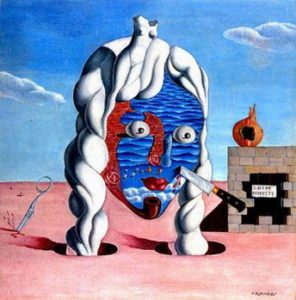
He went to Barcelona
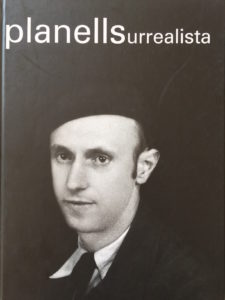
He met Salvador Dali
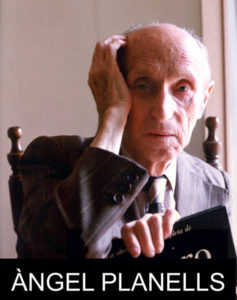
He wrote and published some of his articles
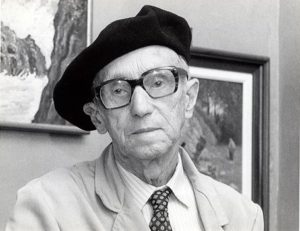
Participated in the first collective exhibitions at the galleries of Dalmau
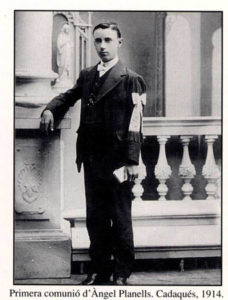
The first individual exhibition
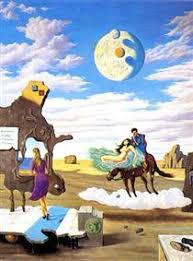
He created several famous canvases
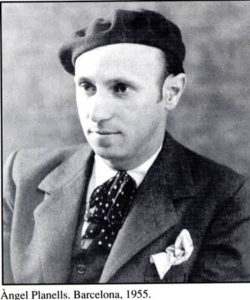
He became a member of the new art association Exposició Logicofobista
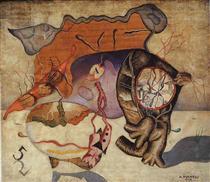
Left teaching at the School of Fine Arts

The old artist met Rene Metre

The death of the artist
